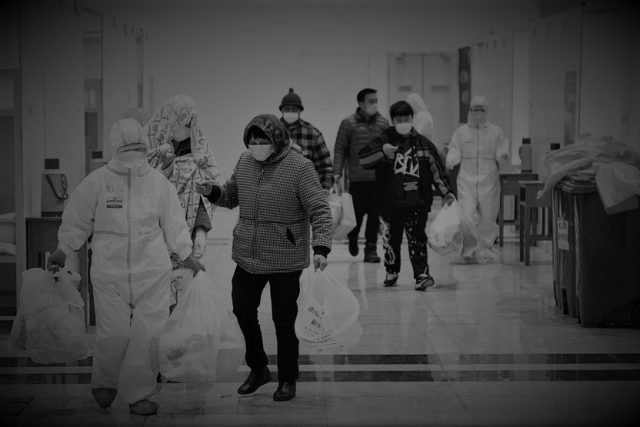Latin America has been facing a second wave of the coronavirus pandemic in the last few weeks, while in some of the countries the immunization process is advancing. Several countries have already detected cases and community transmission of more aggressive variants of Covid-19, such as the Brazilian and the British, as well as the South African and the New York variant.
The country hardest hit in the last week, in relation to its population (3.47 million inhabitants), is Uruguay. According to the website Our World in Data, from the University of Oxford, which publishes data on the progress of the pandemic in the world, in the last seven days – from April 13 to 20 – this South American nation registered a rate of 818, 26 positive cases of coronavirus per day per million inhabitants.
According to its Ministry of Public Health, Uruguay accumulated 169,327 cases of coronavirus as of Tuesday, 19,897 more than seven days ago, explains a report by journalist Edgar Romero published by RT.
Uruguay is followed by Argentina (with a population of 45.2 million), with a rate of 520.34 daily cases per million inhabitants in the last seven days. Until Tuesday, the Argentinian Health authorities recorded 2,743,620 positive diagnoses of covid-19 since the start of the pandemic, which is 164,620 more than on April 13.
Meanwhile, Chile (19.12 million citizens) has a rate of 354.81 cases per day in the last week for every million inhabitants. On April 20, the Chilean Ministry of Health reported that 1,136,435 had been infected since March 2020; In the last week, 47,725 people have tested positive.
Among the first 10 countries in the region that have seen an increase in their infection rate in the last week, in relation to their population, there are also Colombia, Paraguay, Brazil, Peru, Costa Rica, Guyana and Ecuador.
Colombia, which counts the current situation as its third peak of the pandemic, currently registers its highest rate of occupancy of beds in intensive care units (ICU), with 77.38%, according to the latest report from its Ministry of Health, which indicated that there are 6,233 people between confirmed and suspected cases of covid-19 and 3,488 due to other pathologies. On April 1, this index was at 61.79%. The situation is more worrying in Medellín, where this Tuesday the number of these occupied spaces reached 99%.
Brazil continues to be the country with the highest daily figures; for example, in the last week it has detected 443,082 infections; however, it is the most populous nation in the region, with 212.56 million inhabitants.
In Ecuador, the Minister of Health, Camilo Salinas, has confirmed that there are waiting lists throughout the country of patients seeking access to an ICU bed, Quito being the city hardest hit in this new wave, as well as Guayaquil. —The most affected at the beginning of the pandemic.
The list of these top 10 countries is followed by Bolivia, with 91.69 daily infections per million inhabitants in the last week; Honduras (82.34), Suriname (78.90), Guatemala (74.78), Panama (72.77), Venezuela (44.03), Mexico (27.50), El Salvador (22.80) and Belize (19.76).
Deaths due to covid-19
Uruguay is also at the forefront, in the region, in the rate of deaths from coronavirus, according to its population.
In the last week, the average daily death rate is 17.56 per million inhabitants. The Ministry of Public Health reported on Tuesday, April 20, that 2,022 people, with a diagnosis of covid-19, have died, 427 more than those registered until April 13.
In the death rate, Brazil ranks second in the region, with an average rate of 13.16 deaths per day in the last week for every million citizens. According to the National Council of Health Secretaries (CONASS), as of Tuesday the South American giant accumulated 378,003 deaths from the pandemic, 19,578 more than a week ago.
In third place is Peru, with 10.68 deaths from covid-19 daily from April 13 to 20 per million inhabitants. The Health Ministry reported on Tuesday that 57,954 people have died from covid-19 in the country and only in the last week there have been 2,465 of these deaths.
Nearby is Paraguay, with 7.13 million inhabitants, with an average daily death rate, in the last week, of 9.85 per million citizens. In the report of the Ministry of Health – last Tuesday – 5,470 deaths were reported throughout the pandemic, of which 492 died in the last week.
These countries are followed by Colombia, Chile, Argentina, Ecuador, Mexico and Guyana, among the 10 countries with the highest rate of deaths per day per million inhabitants in the last week.
There is also Bolivia, with 2.44 daily deaths in the last seven days for every million citizens; Guatemala (1.77), Costa Rica (1.68), Honduras (1.49), Suriname (0.97), Venezuela (0.65), Panama (0.63) and El Salvador (0.55) .
What is being done to stop the pandemic?
In some countries the vaccination process is advancing. The three countries that in the last week have registered the highest rate of daily infections per million inhabitants, which are Uruguay, Argentina and Chile, also lead the immunization process in the region.
Chile is the nation that has vaccinated the most. According to the website Our World in Data, this country has applied the medicine against covid-19 to 40.69% of its population until April 19. According to the information provided by the authorities, until that day 7,777,919 people were vaccinated, of which 5,574,683 completed their immunization process, with the two required doses of the drug.
Uruguay, for its part, has vaccinated 31.14% of its population until Tuesday, April 20; while in Argentina the percentage of vaccinated is 12.44. Among the top 10 countries that have vaccinated the most are also Brazil, El Salvador, Costa Rica, Mexico, Belize, Panama and Guyana.
They are joined by Suriname, with 5.90% of its population immunized; Colombia (5.26%), Bolivia (3.31%), Peru (2.26%), Ecuador (2.14%), Paraguay (1.06%), Venezuela (0.88%), Guatemala ( 0.87%) and Honduras (0.56%).
Since the end of March, in Chile between 80 and 90% of the population has been confined – it varies according to the Government’s ‘Step by Step’ scheme – to contain this second wave of coronavirus.
In Argentina, on Friday April 16, some restrictions came into force in the Metropolitan Area of Buenos Aires (AMBA), such as the prohibition of night traffic between 20:00 and 06:00; Recreational, social, cultural, sports and religious activities in closed places were suspended and commercial activities will close at 19:00.
Meanwhile, in Uruguay some activities, such as classes, are suspended; however, the government of Luis Lacalle Pou continues to appeal to «responsible freedom» and has not decreed a mandatory confinement. At the end of March, the president acknowledged that the country is going through a «complicated» moment, however, he ruled out the quarantine, noting that his administration «does not believe in a police State».
In Brazil, in the face of Jair Bolsonaro’s continued refusal to impose measures to prevent the spread of the virus, state governors have applied their restrictions.
The Colombian Government, for its part, established, this week, measures for each city depending on the occupation of the ICUs. For example, in cities with more than 85% of these units occupied, the “pico y cédula” is applied, which consists in that on certain days the entry to commercial establishments and use of public transport is only allowed according to the last number of your identity document; as well as a curfew between 18:00 and 05:00.
In Ecuador, there are currently few measures to stop contagions and, for now, the Emergency Operations Committee (COE) rules out a total confinement. The Ombudsman’s Office urged the Government to «issue a State of exception» and apply the necessary measures «so that the most affected cantons and provinces enter a mandatory general isolation of at least 15 days», with the aim of stopping the collapse of the healthcare system.


